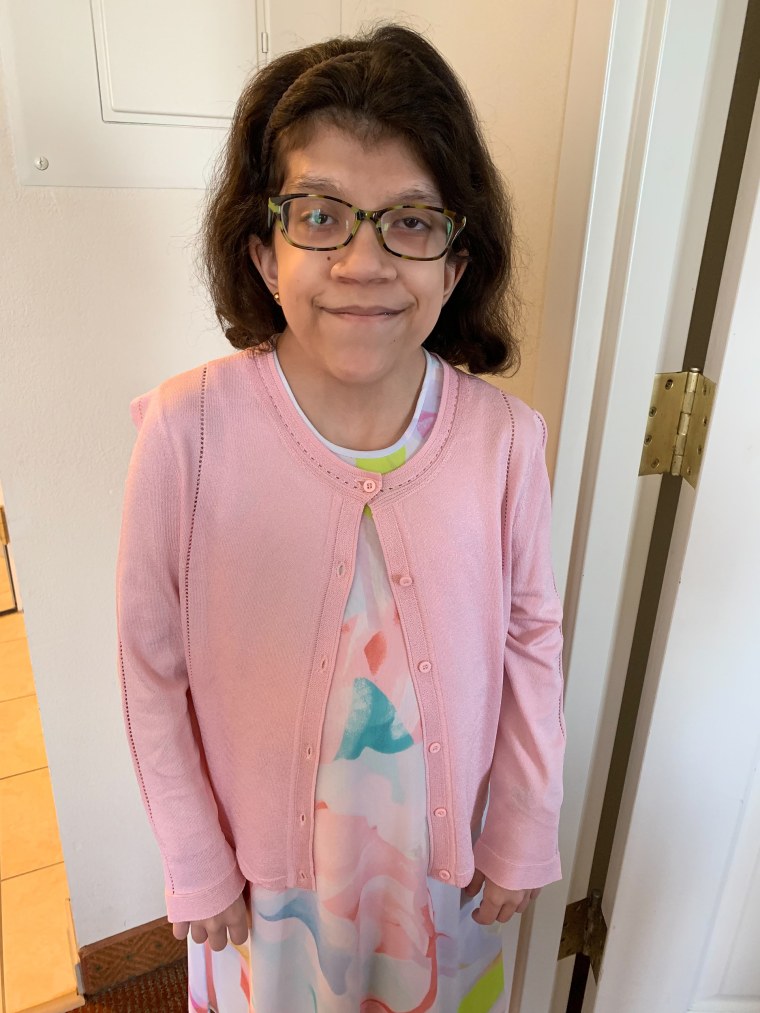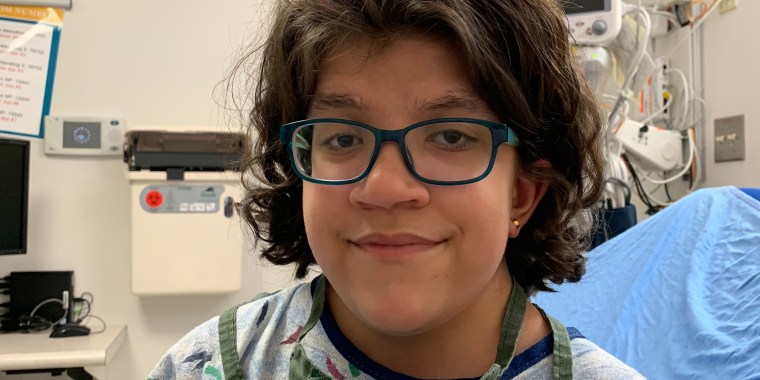Two years ago, Maria, then 14, started feeling off. Her stomach hurt and she often experienced nausea. She was exhausted and looked really pale. Worried, her parents took her to the emergency room.
There doctors discovered that Maria, who at age 2 was diagnosed with Noonan syndrome, a genetic disorder that can lead to several health issues, was experiencing serious complications related to the condition. Lymphatic fluid was oozing into her gut. To treat it, they’d have to give her frequent blood transfusions and perform procedures. But that wasn’t a long-term solution.
“She was transfusion dependent and she was constantly in the hospital,” Dr. Yoav Dori, director of the Jill and Mark Fishman Center for Lymphatic Disorders at Children’s Hospital of Philadelphia, told TODAY. “(Protein losing enteropathy is) like the equivalent of a starving child.”

But Dori and his colleagues believed a drug used for some cancers could resolve Maria’s problems. Receiving it required special permission from the U.S. Food and Drug Administration, though.
“We had no hesitation whatsoever,” Elizabeth, Maria’s mother, told the Children’s Hospital of Philadelphia website. The family declined an interview with TODAY. “(Maria) saw the value for herself, but she was also thinking of other Noonan kids.”
Maria is the first person with Noonan syndrome to receive the treatment, a MEK inhibitor, and it transformed her life.
“(The drug) deals with the entire system,” Dori said. “It caused a remodeling of the entire system in her gut. It looks normal (now). In addition to the specific problems in the lymphatic system, a whole bunch of other problems started getting better.”
An unexpected diagnosis
Maria was born early at 26 weeks and spent three months in the hospital. While she had a hole in her heart, it improved without treatment, and she went home. She was "tiny," but doctors suspected her early birth led to that. But when a 2-year-old Maria visited a cardiologist for a follow-up, the doctor made a surprise diagnosis.
“As soon as we walked in, the doctor said, ‘Oh, she’s a Noonan!'” Elizabeth said. “It was the first time someone mentioned she might have a genetic disorder.”

Noonan syndrome is a genetic disorder that occurs in 1 in 1,000 to 2,500 people. It can cause distinctive facial features, short stature, heart problems, developmental delays, malformations of the bones of the rib cage and bleeding issues, according to the National Human Genome Research Institute.
“Noonan syndrome is one of the more common syndromes we see in the pediatric cardiology world,” Dori said. “It is a genetic disorder that (affects) multiple organs.”
Many children with Noonan syndrome experience problems with their pulmonary valves, but doctors have “pretty good treatments” to manage that. About 10 to 20% of Noonan patients experience lymphatic problems, like Maria, Dori said, but there are fewer treatments for that.
Dori and his team have been examining the lymphatic pathways to understand them better.
“People with Noonan syndrome have a very disorganized and dysfunctional lymphatic system," Dori explained.
The lymphatic system is a network of tissues and organs that distributes lymph fluid, which helps the body filter toxins and fight infection. When it leaks, it builds up and makes it harder for the body to do what it should. At age 5, Maria experienced a lymphatic leak into her chest cavity and she struggled to breathe. Doctors removed the fluid and she recovered. But eight years later, Maria experienced leaking in her stomach, causing protein losing enteropathy (protein loss due to compromised gastrointestinal mucosa). She had bleeding in her gut and she lost weight, hovering around 70 pounds.
“Her biggest problem that she had was a backup of lymph (fluid) into the first portion of her intestine called the duodenum,” Dori said. “(The liquid) will find the weakest spot to leak into.”
When that happens, children don’t receive proper nutrients, have diarrhea and develop fluid accumulation in their bellies.
“If we did not find a way to treat her, Maria most likely would succumb to the problems she had,” Dori said. “She would not survive.”
Without something to help, Maria’s body would continue creating new lymphatic channels, making it likely that her problems would continue.
“We could shut down some of the leaks,” Dori said. “But we couldn’t make her system normal.”
A special application for treatment
Doctors believed that a MEK inhibitor — which successfully treated another patient with a different lymphatic disorder — might help Maria. But for her to be able to use it, the doctors had to apply to the FDA for special use of the drug, what’s known as compassionate use. The doctors hoped that the drug would slow the pathway that “is in overdrive” so her body no longer made the new lymphatic pathways. For now, they believe Maria needs to be on it indefinitely. But it has already had a profound effect on her.
“It is absolutely game-changing,” Dori said. “She had failure to thrive, short stature and delayed puberty and those things started improving. It appears that a lot of these things are a downstream effect of that pathway and by treating that pathway with that drug … it resolved.”
Dori hopes that he and others can continue to use this treatment for others to understand how it works better.
As for Maria, now 16, and her parents, this change has been remarkable.
“She’s a lot happier. I think she knew deep down she was dying,” Elizabeth told Children’s Hospital of Philadelphia. “The medicine gave her hope.”